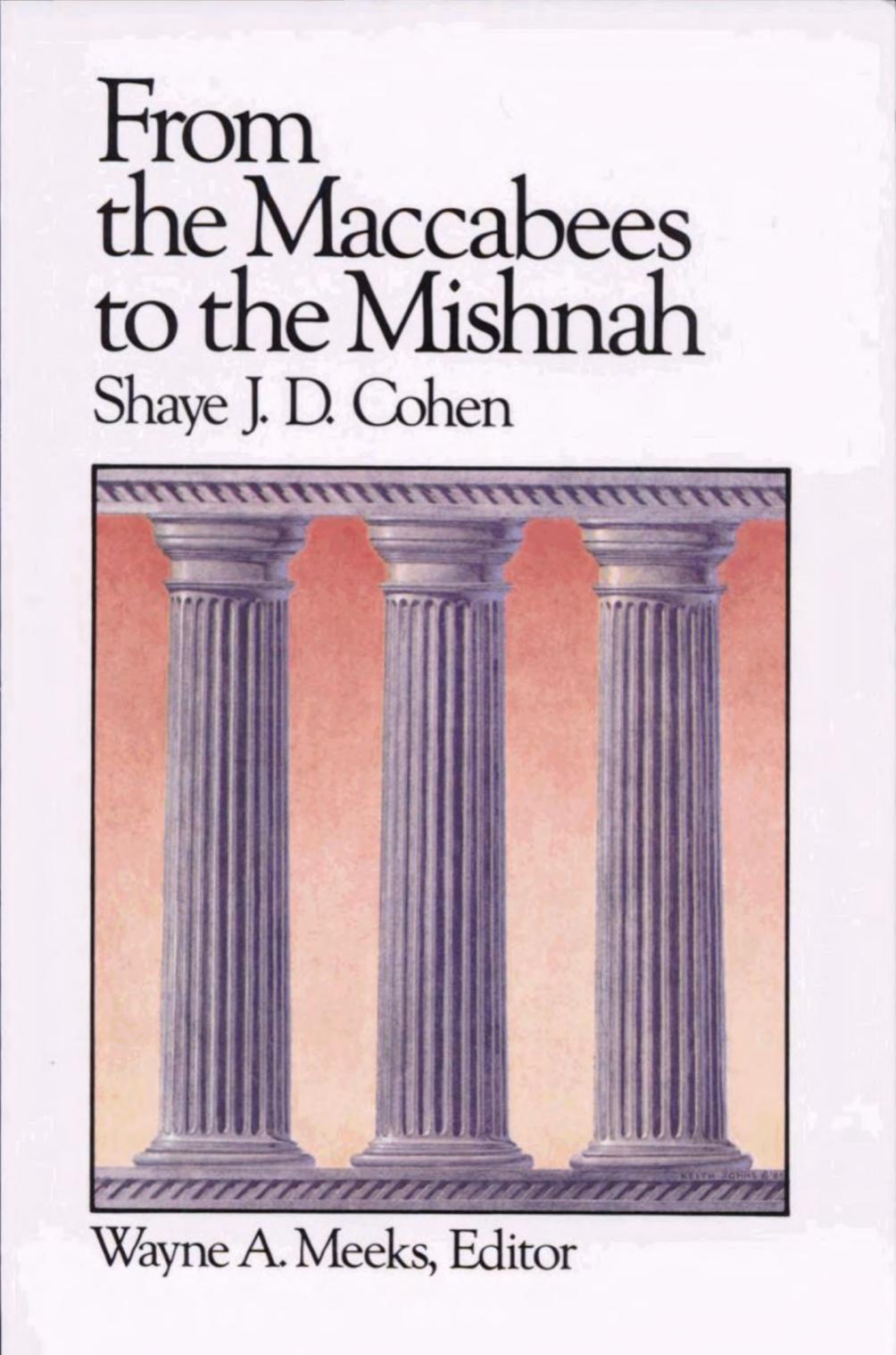From the Maccabees to the Mishnah by Shaye J. D. Cohen

Author:Shaye J. D. Cohen
Language: eng
Format: epub, pdf
ISBN: 9781611645484
Publisher: Westminster John Knox Press
Published: 2014-03-11T16:00:00+00:00
Sources Written in Hebrew: Qumran Scrolls
The Works in the Qumran Library
The scrolls discovered in the Judean desert (also known as the Dead Sea Scrolls) are at once the richest and the most puzzling sources for ancient Jewish sectarianism. The scrolls were discovered in caves near a settlement at Khirbet Qumran (hence the name Qumran scrolls). Pottery fragments link the scrolls found in the caves to the settlement so that the vast majority of scholars agree that the scrolls constitute the library of the group that lived in the settlement and that some of the scrolls were actually written at Qumran.
What is the origin of the literature preserved by the scrolls? This question is much more difficult. The library contains (1) works, of whatever origin, that were widely read and widely available in Jewish society; (2) works that originated in esoteric, pietistic, or sectarian circles outside of Qumran; and (3) works that were the product of the Qumran sect itself. I think that all scholars would accept this tripartite classification but would debate which works belong in category 2 and which in category 3. The simplest to identify is category 1, which includes books of what we call the Bible (in Hebrew, Aramaic, or Greek) and works like Tobit and Ben Sira. These works were read at Qumran, not composed there; numerous copies of Leviticus and Isaiah, for example, have been found among the Qumran scrolls, but no one will argue on that basis that these works must have been composed by the Jews of Qumran! Jubilees, Testament of Levi, and Enoch probably belong to category 2: they appear to be esoteric works but give no indication of their origins and, in all likelihood, were not composed at Qumran (or if they were composed at Qumran, do not reflect the distinctive history and ideology of the group). Category 3 in turn consists of two types of works. Some works composed at Qumran reflect the distinctive history and ideology of the Qumran group and have a marked sectarian character. The Rule of the Community (also called the Manual of Discipline), the Damascus Covenant, the War of the Sons of Light against the Sons of Darkness, the commentaries on Nahum (Nahum Pesher) and on Habakkuk (Habakkuk Pesher)—all these works reflect a strong sense of contrast between members of the group and outsiders, even if they disagree on other matters. But other works, like the Temple Scroll, the Thanksgiving Hymns (Hodayot), and the Angelic Liturgy (Songs of the Sabbath Sacrifice), which fit Qumranic theology and practice so well that they probably are of Qumranic origin, reflect no sectarian self-consciousness at all.
There is still much debate about the contours of the works that belong in categories 2 and 3. A more precise identification of the origins of the works that belong in category 2 would greatly illuminate the relations of the Qumran sectarians to their predecessors in the third century BCE (when the book of Enoch was written). A more precise identification of the two different types of works that belong to category 3 would greatly illuminate the history of the sect.
Download
From the Maccabees to the Mishnah by Shaye J. D. Cohen.pdf
This site does not store any files on its server. We only index and link to content provided by other sites. Please contact the content providers to delete copyright contents if any and email us, we'll remove relevant links or contents immediately.
The Five People You Meet in Heaven by Mitch Albom(3475)
The Secret Power of Speaking God's Word by Joyce Meyer(2974)
Real Sex by Lauren F. Winner(2967)
Name Book, The: Over 10,000 Names--Their Meanings, Origins, and Spiritual Significance by Astoria Dorothy(2939)
The Holy Spirit by Billy Graham(2892)
0041152001443424520 .pdf by Unknown(2784)
ESV Study Bible by Crossway(2732)
How The Mind Works by Steven Pinker(2729)
Ancient Worlds by Michael Scott(2625)
Churchill by Paul Johnson(2506)
The Meaning of the Library by unknow(2505)
The ESV Study Bible by Crossway Bibles(2502)
The Gnostic Gospels by Pagels Elaine(2472)
MOSES THE EGYPTIAN by Jan Assmann(2373)
Jesus by Paul Johnson(2310)
City of Stairs by Robert Jackson Bennett(2309)
The Complete Dead Sea Scrolls in English (7th Edition) (Penguin Classics) by Geza Vermes(2235)
Ancient Near Eastern Thought and the Old Testament by John H. Walton(2196)
The Nativity by Geza Vermes(2180)
